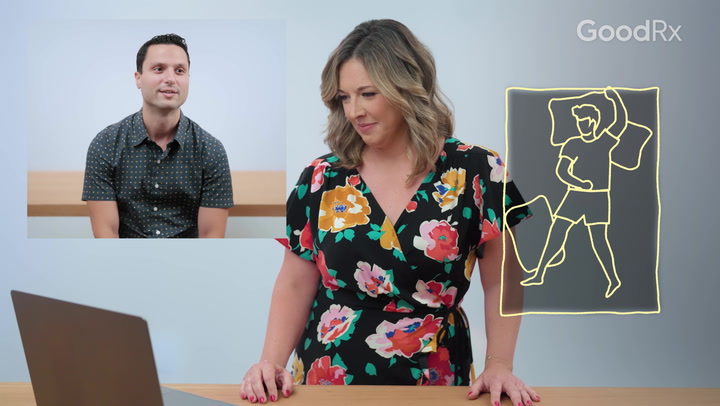
4 Tips for How to Power Nap and Boost Your Productivity
Key takeaways:
A power nap is a midday nap that can help you feel refreshed and more alert for the rest of the day.
Power naps may reduce fatigue, improve memory, and boost your mood.
Find a cool, dark, and quiet space to nap and set an alarm so you don't oversleep.
After the age of 4 or 5, a midday nap feels less like a necessity and more like a luxury. But many of us could benefit from a quick power nap well into adulthood.
A power nap is a short, midday snooze –– usually around 20 minutes –– that helps you power through the rest of your day. (So yes, a 2-hour nap is too long.) While short, a power nap can help you feel more energetic, alert, and refreshed. And you'll wake up before you enter deeper stages of the sleep cycle and end up groggy.
Here's how to take the perfect power nap.
Search and compare options
How to power nap
Daytime napping might not come as easily to you as it did when you were 4. The tips below will help you get the most power nap benefits.
1. Take a midday nap
Napping too late in the day could make it harder to fall asleep at night. So try to time your power nap between 1PM and 3PM. An early afternoon snooze can also help you recharge if you hit an afternoon slump after lunch.
Some experts narrow the window even further, saying the best time to nap is between 2PM and 3PM. But it might take some trial and error to find your ideal nap time.
2. Set an alarm
Napping for too long could be counterproductive: You might wake up groggy or have difficulty falling asleep at night. So keep afternoon power naps under 30 minutes. Set an alarm for 15 to 20 minutes to avoid oversleeping. And don't hit the snooze button when your alarm goes off, no matter how tempting.
If you have time, you can also try the 30-90 rule for better naps. According to this rule, a midday nap should be under 30 minutes or about 90 minutes. A 90-minute nap typically gives you enough time to complete an entire sleep cycle. During a full cycle, your body goes through several different sleep stages that support critical functions such as memory consolidation and muscle repair.
But be careful if you opt for 90-minute naps. It might be harder to wake up once you fall into a deep sleep.
Some studies suggest there's a link between long naps and health conditions, such as high blood pressure. But that link may have more to do with other habits, including having a big lunch, going to bed later, and smoking. Be sure to practice healthy habits, including good sleep hygiene.
Read more like this
Explore these related articles, suggested for readers like you.
Remember to plan 90-minute naps for the early afternoon. It's best to avoid anything between a long nap and a power nap — like 45 minutes — because you'll probably wake up in the middle of the deeper stages of sleep.
3. Find a quiet, comfortable spot to snooze
Set yourself up for success by finding a dark, quiet, and comfortable spot to fall asleep. If you can't find the right setting in the middle of the day, try these strategies to create a cozy environment:
Turn off the lights.
Consider blackout curtains if you're napping at home.
Wear a sleep mask to block the light –– including blue light from electronic devices –– if you're on the go.
Silence notifications from your phone, computer, or other electronic devices. (Better yet, turn them off!)
Try earplugs or a white noise machine.
Keep the room cool –– around 65 to 68 degrees Fahrenheit –– if you can. Adjust your thermostat at home as needed. Or consider a small portable fan, sweater, or blanket if you're napping at work or on the go.
4. Consider pre-nap caffeine
You may be able to ward off post-nap grogginess by having a little caffeine before you go to sleep. This strategy is sometimes called a coffee nap (or a "nappuccino"). The idea is that having a cup of coffee before a power nap will give the caffeine time to kick in. So you'll wake up feeling more alert.
But the science behind coffee naps is very limited. Small studies suggest that they may increase alertness in people who drive for long periods or work night shifts. But there's a need for more research on how coffee naps affect other populations. Plus, everyone processes and responds to caffeine differently. It could take longer than 20 to 30 minutes for caffeine to take effect.
That said, taking a coffee nap could be a low-risk way to beat midday fatigue. If you decide to test it out, keep these tips in mind:
Set your alarm for 20 minutes after your last sip of coffee.
Cut off caffeine within 6 hours of bedtime.
Skip the coffee nap if you've already had 400 mg of caffeine –– or roughly 4 to 5 cups of coffee –– during the day.
Ditch coffee naps altogether if you notice disruptive symptoms, such as jitters or anxiety, after consuming coffee.
What are the benefits of power napping?
Still wondering if power naps work? Research suggests a perfectly timed midday nap can deliver the following benefits.
Reduced fatigue: A power nap –– which should be around 20 minutes but no longer than 30 minutes –– can reduce fatigue and help you feel refreshed and energized.
Increased alertness: Napping for about 20 minutes has been shown to improve alertness for a couple of hours after you wake up.
Improved mood: A small study found napping may help you cope with frustration, improve mood, and reduce impulsivity.
Better heart health: The same study reported a link between midday naps and a lower risk of heart-related death, especially in men. This might be because sleep helps us bounce back from stress. Another study found that people who napped 1 to 2 times per week had a lower risk of heart problems than those who didn’t nap.
Better cognitive performance: A meta-analysis found people who napped scored higher on several measures of brain health, including alertness, memory, and executive function.
More productivity: It's probably not surprising that being more alert after a nap can help you focus when you return to work. That could make you more productive at work.
Fewer accidents for shift workers: If you work nights and commute home in the morning, a short nap before getting behind the wheel could help you stay safe on the drive.
The bottom line
It's not always easy to find the perfect place for a power nap in the middle of a busy day. But a 20-minute snooze can help you perform better at work and feel more alert throughout the day.
If you're going to power nap, keep it short and in the afternoon so you don't compromise your nighttime sleep. Try using tools like earplugs and eye masks and turn on the "do not disturb" setting on your phone to help you fall — and stay — asleep until your nap alarm goes off.
Why trust our experts?



References
Cappelletti, S., et al. (2015). Caffeine: Cognitive and physical performance enhancer or psychoactive drug? Current Neuropharmacology.
Centers for Disease Control and Prevention. (2020). NIOSH training for nurses on shift work and long work hours.
Centofanti, S., et al. (2020). A pilot study investigating the impact of a caffeine-nap on alertness during a simulated night shift. Chronobiology International.
Dutheil, F., et al. (2021). Effects of a short daytime nap on the cognitive performance: A systematic review and meta-analysis. International Journal of Environmental Research and Public Health.
George, A. S., et al. (2024). The science and timing of power naps: Investigating the cognitive and physical benefits of brief daytime sleep. Partners Universal Innovative Research Publication.
Goldschmied, J. R., et al. (2015). Napping to modulate frustration and impulsivity: A pilot study. Personality and Individual Differences.
Häusler, N., et al. (2019). Association of napping with incident cardiovascular events in a prospective cohort study. Heart.
Hilditch, C. J., et al. (2016). A 30-minute, but not a 10-minute nighttime nap is associated with sleep inertia. Sleep.
Hilditch, C. J., et al. (2016). Time to wake up: Reactive countermeasures to sleep inertia. Industrial Health.
National Sleep Foundation. (2021). The benefits of napping.
Patel, A. K., et al. (2024). Physiology, sleep stages. StatPearls.
Reyner, L. A., et al. (1997). Suppression of sleepiness in drivers: Combination of caffeine with a short nap. Psychophysiology.
U.S. Food and Drug Administration. (2023). Spilling the beans: How much caffeine is too much?
Vizmanos, B., et al. (2023). Lifestyle mediators of associations among siestas, obesity, and metabolic health. Obesity.





























